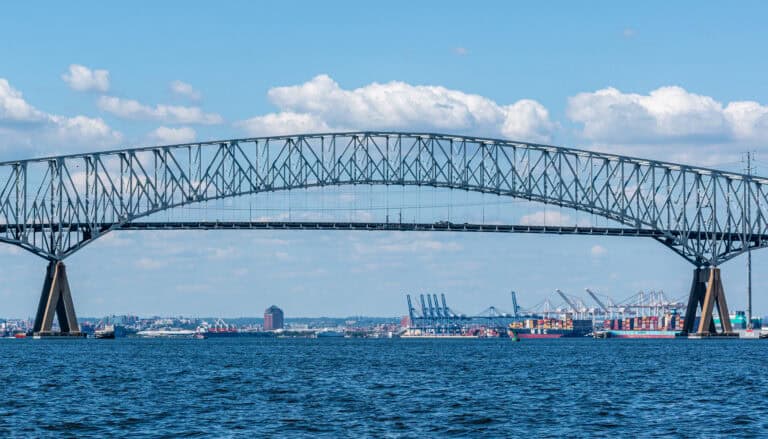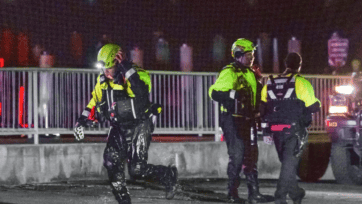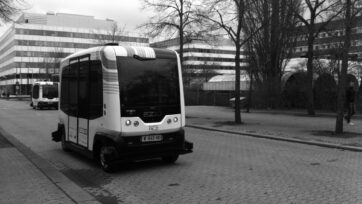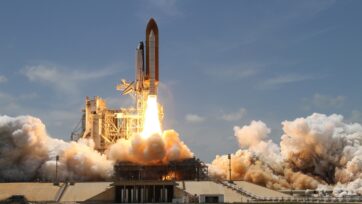In the early hours of a seemingly ordinary Tuesday, the city of Baltimore, USA was struck by a tragedy that would affect the nation. The Francis Scott Key Bridge, a vital connector in the region’s transportation network, met a catastrophic fate as it collapsed into the Patapsco River following a collision with the cargo ship Dali. The incident claimed the lives of six individuals, left several others injured or missing, and raised profound questions about the structural integrity and safety of our infrastructure.
A Detailed Account of the Unfolding Tragedy
The cargo ship Dali, a massive vessel measuring 300 meters (985 feet) in length, issued a distress call moments before the collision, indicating a loss of power. Despite attempts to regain control, the ship struck the bridge at a speed of approximately 14.5kph (9 mph), causing a significant section of the 2.6 km long (1.6 miles) structure to collapse into the water below. At the time of the collision, eight construction workers were on the bridge, engaged in routine maintenance work, filling potholes on the span. The rapidity of the collapse left little time for escape, leading to a tragic loss of life and a desperate search for survivors.
Video of the Baltimore Bridge collapsing (Credit: The Guardian)
Investigations and Structural Integrity Concerns
The National Transportation Safety Board (NTSB) swiftly initiated an investigation to uncover the precise cause of the collision and the subsequent bridge failure. The focus has been on recovering data from the ship’s electronics and examining the structural integrity of the bridge. Preliminary findings suggest that the bridge, despite being a relatively modern structure, may not have been equipped to withstand the impact of a vessel as large as the Dali.
The Francis Scott Key Bridge, built in the 1970s, was designed with certain safety features to protect against collisions. Modern bridges are typically constructed with protections for the piers or columns that support them, such as “sacrificial dolphins” or artificial islands that prevent ships from reaching the bridge piers. However, the sheer size and velocity of the Dali may have exceeded the design assumptions of the time, raising questions about whether the bridge’s piers were adequately fortified to withstand such a massive impact.
The Aftermath and the Path Forward
The collapse has not only caused heartache and loss but also significant economic and logistical disruptions, particularly for the Port of Baltimore, a critical hub for commerce in the region. The road to recovery and rebuilding will be long and challenging, necessitating cooperation from all sectors of the community and a reevaluation of infrastructure safety standards.
As investigations continue and the city looks to the future, the tragedy serves as a stark reminder of the importance of maintaining and upgrading our infrastructure to keep pace with the evolving demands of transportation and commerce. It is a call to action for all stakeholders to prioritize safety, invest in resilient infrastructure, and prevent such catastrophes from occurring in the future.
Systems Engineering Perspective
From a systems engineering perspective, the Baltimore bridge collapse underscores the importance of holistic thinking and integrated approaches in infrastructure design and maintenance. It highlights the need for engineers to practice systems engineering, viewing the structure not only in isolation but also as a part of a bigger system. The roles of techniques such as DFMEA, ETA, FTA and rigorous risk analysis are paramount. The tragedy also highlights the importance of considering not only the physical components of a structure but also the interdependencies and interactions between those components, as well as life-cycle factors such as environmental conditions, technological advancements, and evolving usage patterns in taking a systems view.
Want to Learn More About a Systems Approach?
Consider taking PPI’s 5-day Engineering Successful Infrastructure Systems corporate training, available worldwide.
References
Finley, Ben 2024, ‘What we know about the Baltimore bridge collapse’, The Associated Press, viewed 9th April 2024, <https://apnews.com/article/baltimore-key-bridge-collapse-what-to-know-127d6ae38d63561ca4c1f18b3d508ba6>
Debusmann, Bernd 2024, ‘Baltimore bridge collapse: What will happen to the 21 sailors stranded on the Dali?’, BBC, viewed 9th April 2024, <https://www.bbc.com/news/world-us-canada-68708593>
Griffin, Andrew 2024, ‘Francis Scott Key Bridge collapse: Video captures moment structure falls into water’, Independent, viewed 9th April 2024, <https://www.independent.co.uk/tech/francis-scott-key-bridge-collapse-video-b2520496.html>
Jester, Julia 2024, ‘Maryland bridge collapse: Francis Scott Key Bridge collapses, stranding boat in Baltimore’, NBC News, viewed 9th April 2024, >https://www.nbcnews.com/news/us-news/maryland-bridge-collapse-francis-scott-key-bridge-boat-baltimore-rcna145047>
Marshall, Aarian 2024, ‘Baltimore bridge collapse causes shipping and supply chain disruption’, Wired, viewed 9th April 2024, <https://www.wired.com/story/baltimore-bridge-collapse-shipping-supply-chain-disruption-francis-scott-key/>
Faguy, Ana 2024, ‘Baltimore bridge collapse blocks one of US’s largest seaports’, Forbes, viewed 9th April 2024, <https://www.forbes.com/sites/anafaguy/2024/03/26/baltimore-bridge-collapse-blocks-one-of-uss-largest-seaports/?sh=27c17a9774e5>
The Guardian News, 2024, ‘Moment bridge collapses in Baltimore after cargo ship collision’, viewed on 9th April 2023, <https://www.youtube.com/watch?v=YVdVpd-pqcM>

























